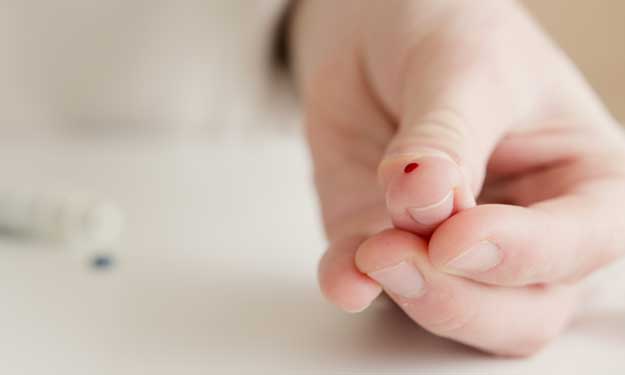Removing Dry Blood Stains

How to Clean Dry Blood Stains.
How to Remove Dry Blood Stains
A quick glance at my thumb while writing this reminds me that cuts are just a part of life. The other day, I cut my thumb while slicing a tomato. It wasn’t too bad, and I cleaned it right away, but things don’t always go so smoothly. When it comes to removing blood stains, cleaning them while fresh is always the best option. A quick rinse or soak in cold water usually does the trick before the stain has a chance to set.
However, blood stains often dry before you even realize they’re there. If you’re dealing with a set-in stain, don’t worry – removing dry blood stains is still possible. It may take a little more time and effort, but with the right approach, you can restore your fabric to its original condition.
Methods for Removing Dry Blood Stains
Using Vinegar
White vinegar is an inexpensive and effective cleaning agent for many household messes, including blood stains.
- Pour white vinegar into a bowl and submerge the stained area for about 30 minutes.
- Gently scrub the stain, working from the outside toward the center, using a soft-bristled brush, clean toothbrush, or even your fingernail.
- Rinse thoroughly and repeat if needed.
- If any color remains, pre-treat the stain with a stain remover, then wash as usual. Avoid the dryer until you’re sure the stain is gone.
Using Hydrogen Peroxide
Hydrogen peroxide is a great option, especially for white fabrics, as it helps break down proteins in blood.
- Place a towel under the stain to prevent it from soaking through to another layer.
- Pour hydrogen peroxide (3%) directly onto the stain and cover it with a clean cloth.
- Let it sit for 5 to 10 minutes, then check the progress.
- Blot the stain and repeat if needed.
- If any discoloration remains, apply a stain remover and wash in cold water.
- For colored fabrics, do a patch test in an inconspicuous spot to ensure it won’t cause fading.
Using Ammonia
Ammonia can be effective for removing blood stains, but it requires extra caution due to its strong fumes and potential to damage delicate fabrics.
- Work in a well-ventilated area and wear gloves and a mask if needed.
- Wet the stain with cool water to loosen some of the dried blood.
- Place a towel underneath the fabric to prevent the stain from spreading.
- Dampen a sponge with a few drops of ammonia, then blot the stain (don’t rub).
- Rinse the sponge frequently and reapply ammonia as needed.
- Rinse thoroughly with cold water and launder as usual.
Considerations & Precautions When Using Ammonia
- Ventilation is important – ammonia has strong fumes.
- Do not use ammonia on wool, silk, or delicate fabrics, as it can weaken fibers.
- Be cautious with colored fabrics, as ammonia can cause fading.
- Never mix ammonia with bleach, as this produces toxic fumes.
Removing Dry Blood Stains from Specific Fabrics
Different fabrics require different treatments to avoid damage. Here’s how to safely remove dry blood stains based on fabric type:
White Fabrics (Cotton, Linen, Polyester, etc.)
- Hydrogen Peroxide (3%) – Pour directly on the stain, let it bubble, then blot with a clean cloth. Rinse with cold water. (Best for whites; may bleach colors.)
- Baking Soda Paste – Mix baking soda with cold water, apply to the stain, let sit for 30 minutes, then scrub gently and rinse.
Colored Fabrics (Cotton, Linen, Polyester, etc.)
- Cold Saltwater Soak – Mix 1 tablespoon of salt per cup of cold water, soak the fabric for 1 hour, then blot or launder.
- Dish Soap & Cold Water – Apply a small amount of dish soap, gently blot, and rinse.
Delicate Fabrics (Silk, Wool, etc.)
- Enzyme-Based Stain Remover – A gentler option that effectively breaks down protein stains.
- White Vinegar & Cold Water – Soak the stain in a 1:2 diluted vinegar solution for 30 minutes, then blot and rinse.
- Avoid ammonia and hydrogen peroxide on delicate fabrics, as they can weaken fibers.
Upholstery & Carpets
- Cold Water & Mild Dish Soap – Blot (don’t rub!) with a cloth dampened with cold, soapy water, then dab with a clean, damp cloth to rinse.
- Hydrogen Peroxide (for light colors) – Use sparingly, apply with a cotton swab, and blot quickly to prevent discoloration.
Additional Tips for Removing Dry Blood Stains
- Soak the fabric in cold water overnight before using other treatments.
- Blot, don’t rub – rubbing can push the stain deeper into the fabric.
- Test stain removers on a hidden area first to check for colorfastness.
- Use enzyme-based stain removers or non-chlorine bleach if needed.
- Avoid heat (hot water or the dryer) until the stain is completely gone, as heat can set blood stains permanently.
Removing dry blood stains may seem stubborn, but they don’t have to be permanent. By using common household items like vinegar, hydrogen peroxide, or ammonia – and tailoring your approach based on the fabric type – you can effectively remove stains and save your clothing. The key is acting as soon as possible, using the right method for the fabric type, and being patient.



